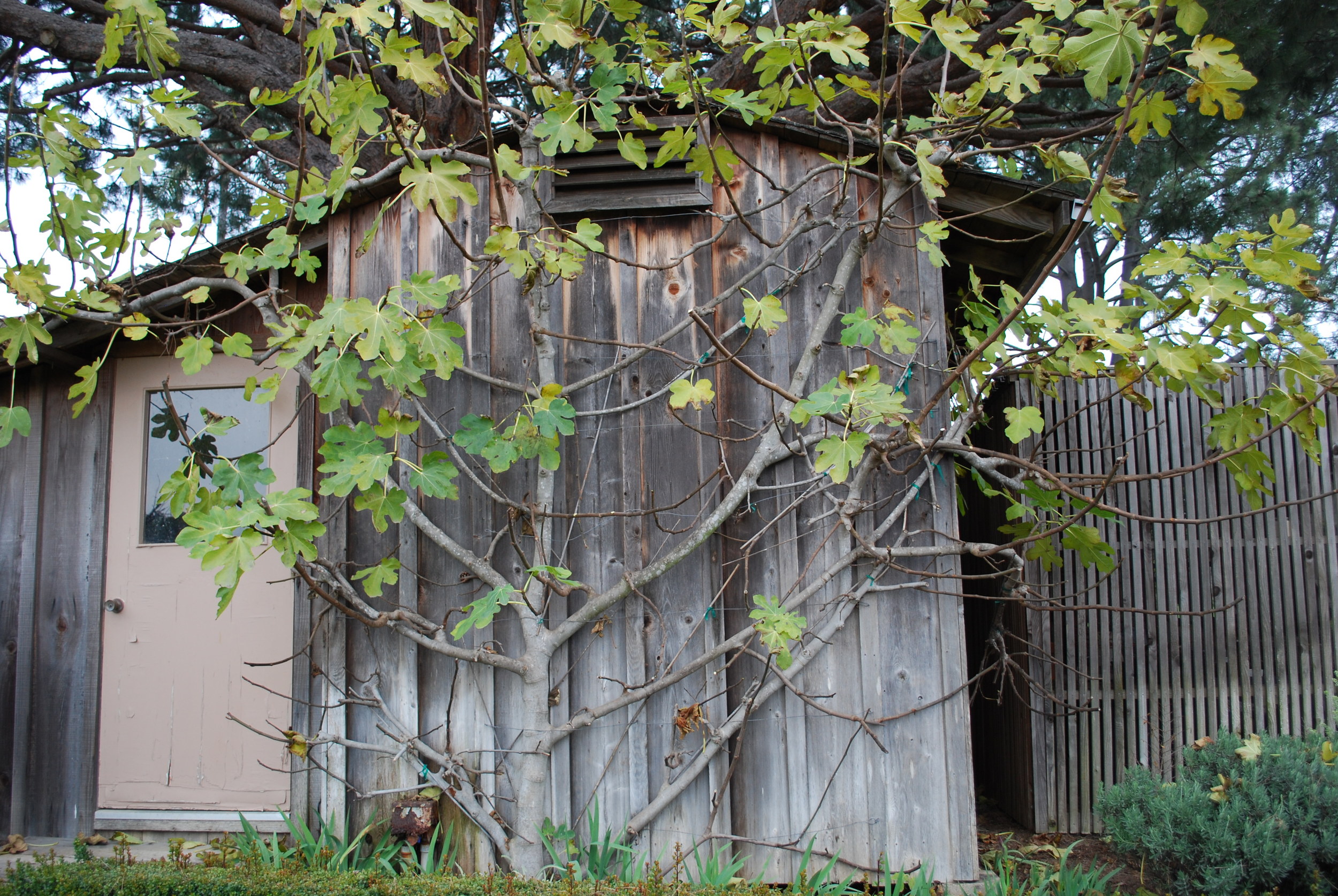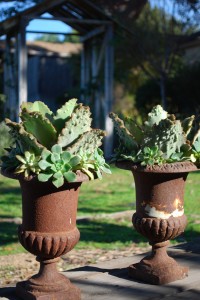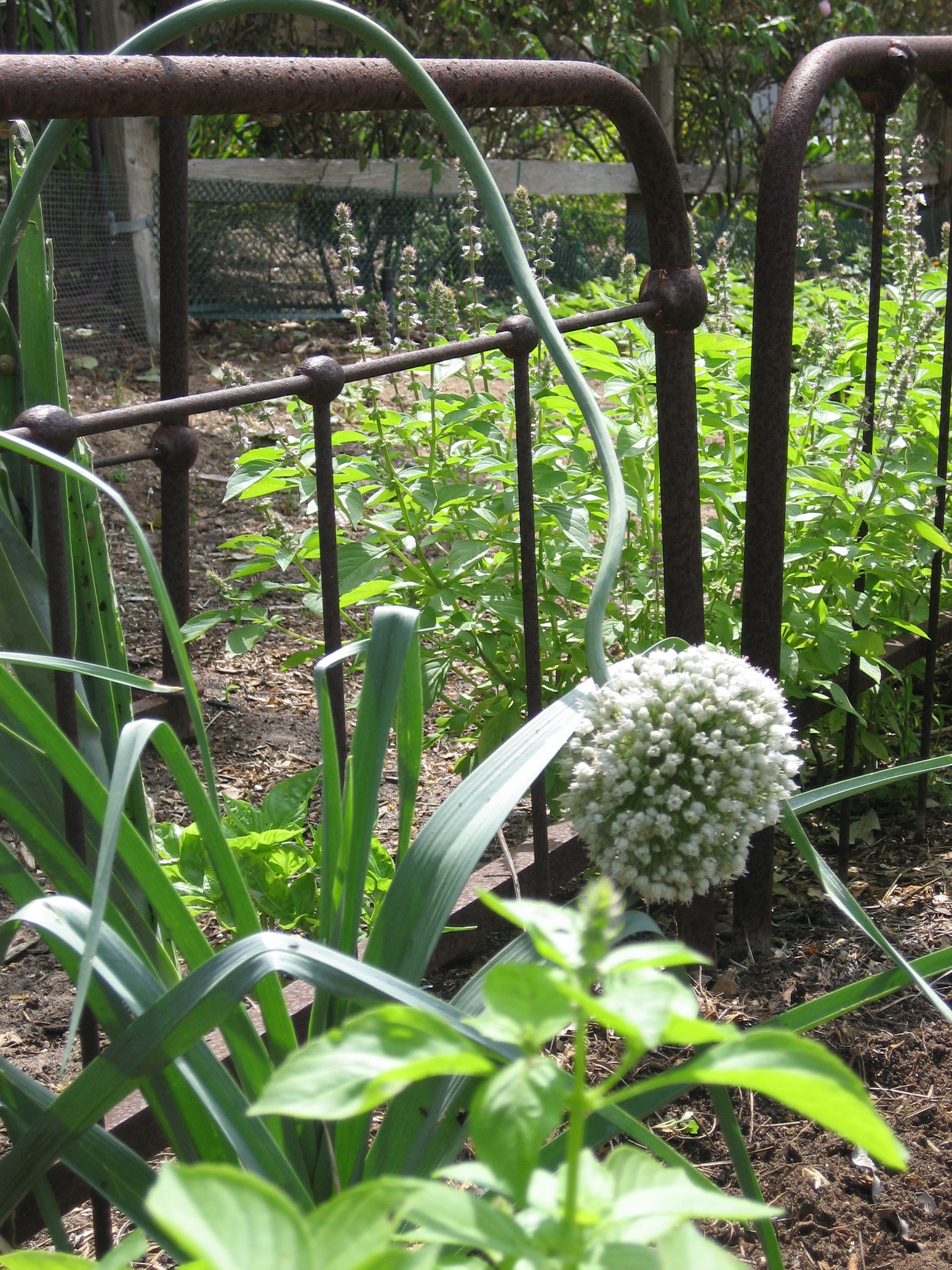 Espalier is the art of training a tree, shrub, or vine to grow on a flat plane. It is a European technique that has been used for hundreds of years, especially for fruit trees. This technique creates a beautiful plant structure, and is efficient in saving space in a small area. Trees trained in this method are generally trained flat against a wall, space, building or in some cases as a free-standing screen or hedge. It is an easy way for a backyard gardener to have room in a small yard to care for and maintain attractive fruit trees.
Espalier is the art of training a tree, shrub, or vine to grow on a flat plane. It is a European technique that has been used for hundreds of years, especially for fruit trees. This technique creates a beautiful plant structure, and is efficient in saving space in a small area. Trees trained in this method are generally trained flat against a wall, space, building or in some cases as a free-standing screen or hedge. It is an easy way for a backyard gardener to have room in a small yard to care for and maintain attractive fruit trees.
There are a few basics for successful espalier fruit trees. Most fruit trees require sun, and good soil drainage. Ideally you want a south-facing or west-facing wall in your yard for sun. Make sure you are purchasing fruit trees that are compatible with your climate zone. Be aware if they are self-fertilizing, or require another specific tree nearby for pollination. Mature espaliered fruit trees require a strong support, especially when laden with their mature fruit. Know your general guidelines for fertilizing, watering, pruning, and pest control for your trees. An espaliered fruit tree requires pruning at least two or three times a year to maintain its shape.
If you have a good location, know what kind of fruit tree you want, and what kind of shape you would like to train it, you are ready to get started. For an overview of "Espalier Patterns" and "Basic Pruning Steps for Espaliers" click on, espalier.
Most varieties of standard, semi-dwarf, and dwarf fruit trees can be espaliered. When you have a choice, go with dwarf or semi-dwarf. With espalier styles, you often hear the term, cordon. It means a single stem-like arm. In espalier patterns, you may have multiple cordons or arms. Remember espaliered fruit trees are an art form. If you have a small space to plant your tree, use 12" between your cordons, if you are trying to cover a large area, use 18" between your cordons. Start with a simple double or triple-tiered cordon, and move on to more advanced styles as you gain experience.
In some cases, certain espalier styles naturally do better with specific fruit trees. Here are some examples of styles most commonly used for popular espaliered fruit trees:
Apple--Lend themselves well to many espalier forms such as hedges, double cordon, vertical cordon, palmetto, and Belgian Fence.
Apricot--Can be pruned to hedges and fan shapes. Needs fairly heavy pruning.
Peach and Nectarine--They fruit on new wood only, requires vigorous pruning to produce new fruiting branches and to maintain espalier form. Best styles are hedge or fan.
Fig--Usually large espaliers, as you can see in the above photo. Either fan shape or natural form for tall espaliers, or low horizontal-armed shapes.
Persimmon--The Oriental persimmon is one of the best for a large, informal espalier.
Pomegranate--They do best with informal shapes, or in four, six, or eight-armed cordons.
"How To" Step by Step Planting a Three-Tiered Cordon Espalier Apple Tree:
Materials Needed: 12 to 14 gauge wire, 9/16" double-pointed staples for wood fencing, wall mounts for masonry and corresponding equipment for stucco/concrete walls, bare root apple tree preferably with ample buds on its trunk, compost, shovel, sharp clippers, green garden tape, chalk or marker, wire clippers, pliers and tape measure.
You will need 7' of wall space to accommodate the size of a mature espaliered apple tree. Measure out a pattern with a single main trunk, and three horizontal tiers (cordons). Measure from the top of your soil up to 48" with your tape measure and mark it. This is the height of your tree; mark a horizontal line at this height which will become your top or third tier (cordon). Draw a vertical line to represent the trunk of the tree in the middle of your 7' space or at approximately 3' 5" (three feet, five inches), allowing a few inches for your tree trunk growth.
Your pattern on your wall or fence should have a vertical line 48" high, with three horizontal lines through it starting at 16" from your soil level, the second at 32" from your soil level, and the third at 48" from your soil level.
When your pattern is finished, begin to attach your wire horizontally along each tier. Each wire must be very secure to eventually support the mature tree and its fruit, whether you are using double pointed staples or masonry wall mounts. Make sure the wire is taunt and secure curling your wire tight at the end with pliers.
With your wire secure and in place, the next step is to plant your apple tree. Make a 14" wide by 14" deep hole. Add compost and mix with soil for drainage. Plant your apple tree 4" away from your fence to allow growing room, and plant so the apple tree base is at soil level. It is very important that you look for a bud on your apple tree trunk which is positioned just above the first tier wire. Potential buds are the little bumps on your tree trunk, which have the potential to grow into a cordon.
Once your tree is planted, cut with sharp clippers your tree at 1-2" above the first tier wire, and right above a bud at a 45 degree angle. This will redirect your apple tree's energy into making the side shoots at the first tier wire. Once side growth has grown 5-6", select the strongest stem on each side, and tie down to your wire with your green garden tape gingerly. Trim off any others, and trim off any new growth that might be emerging below your first tier line on your apple trunk.
At this point you will have new growth starting a cordon on each side at your first tier level, and you have small growth growing vertical, which will eventually reach the second tier level. Be careful at this stage not to allow the vertical new growth to grow more than 6". Keep nipping it back to 6" height, to allow your new side shoots along the first tier to keep growing longer horizontally.
When your first tier cordons have reached about 3/4 of the way toward the end of their wire support, you can allow the vertical trunk shoot now to grow up and reach the second tier wire level, and start the whole process over again. Continue to train your apple tree until all of the tier branching is the the 7' completed width.
As you are training your apple tree into your three-tiered shape, keep the small shoots along the cordon trimmed back to 4" to 5" long. Your tree will continue to grow and mature, and every flower will become a fruit spur, which will bear fruit. Eventually, your fruit tree will become its own support structure.
It takes about three to four years to create a mature three-tiered apple tree, but you will start to reap fruit before then. Generally with espaliered trees, fruit will be larger and sweeter, because their fruit is exposed to more sunlight and the trees have been pruned regularly to keep their shape.
A great source, in San Diego North County, for a tremendous selection of bareroot fruit trees and knowledgeable friendly customer service is www. weidners.com, (760) 436-2194.
Bonnie Jo Manion writes the garden lifestyle blog, www.VintageGardenGal.com, (tel) (760) 402-7600, cultivating the best of gardening, vintage container design, home-grown food, and backyard vineyard.








